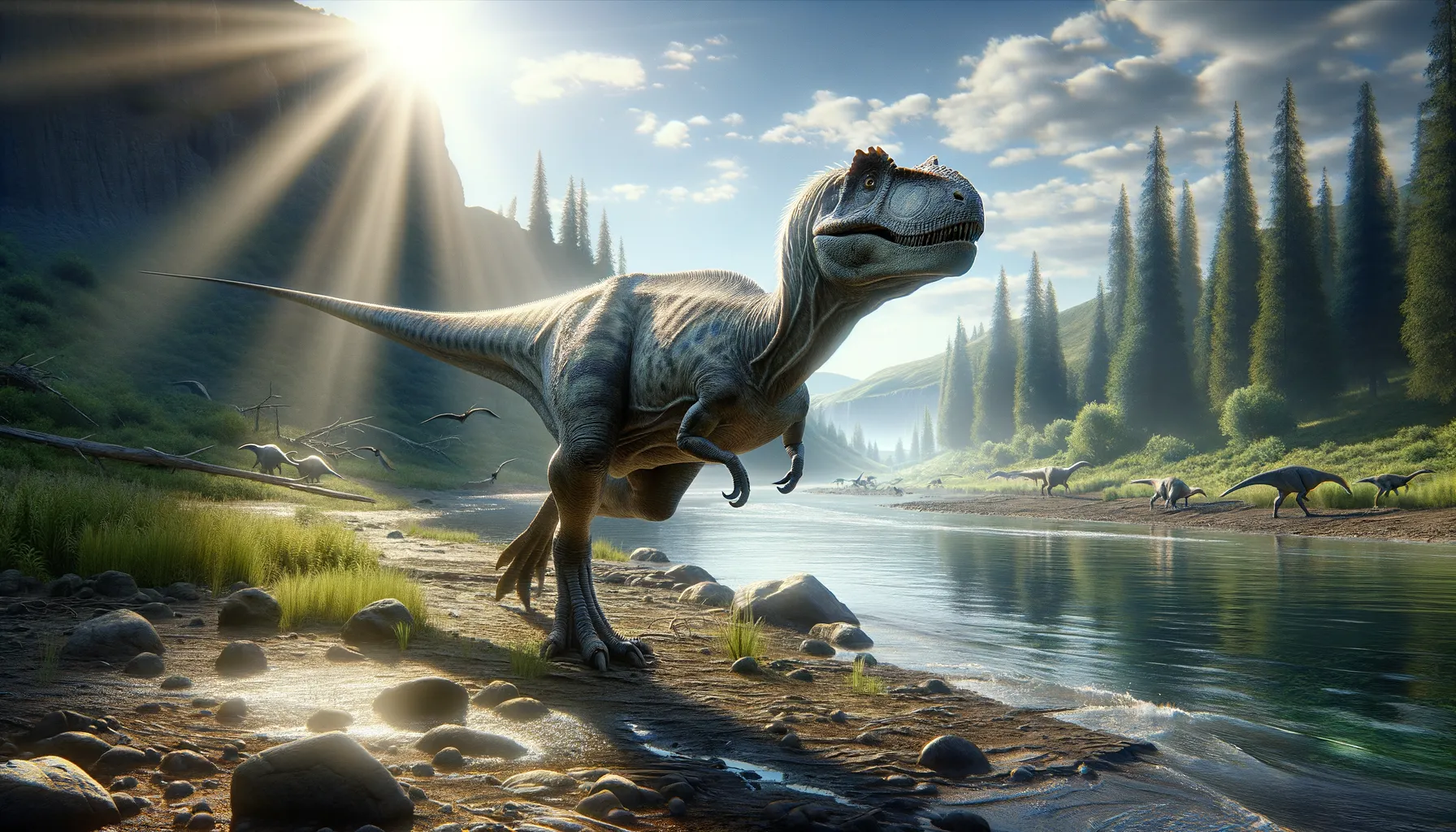
Genusaurus
Agile hunter of the ancient world.
Period
Cretaceous
Length
Roughly 3-4 meters long.
Height
Around 2 meters at the hips.
Weight
Approximately 500 kg.
Genusaurus was a small theropod dinosaur that lived during the Early Cretaceous period. Known for its relatively lightweight and agile body, this dinosaur might have used its speed to chase down prey. As a bipedal carnivore, Genusaurus showcases the diversity of theropods that thrived in what is now Europe. Its fossils provide a glimpse into the adaptations and ecological niches occupied by meat-eating dinosaurs of the Cretaceous.
Diet
Genusaurus was a carnivore, primarily feeding on small animals and other vertebrates. Given its size, it likely hunted smaller prey, using its speed and agility to catch its meals.
Hunting
This dinosaur was likely an active predator, relying on its quick movements. It may have hunted alone, stalking prey before making a swift attack to capture its target.
Environmental challenges
Living in the Early Cretaceous, Genusaurus faced various predators and competitors, which meant it had to be vigilant and fast. Climate fluctuations during this period also posed challenges, as they affected the availability of resources. As a mid-sized predator, it needed to balance its hunting strategy to secure food regularly without becoming prey itself.
Speed
Moderately fast for a theropod.
Lifespan
Estimated around 20 to 30 years.
First discovery
Discovered in 1984 in France.
Fun Facts
- Genusaurus was a dinosaur that lived approximately 125 million years ago during the Early Cretaceous period.
- It is known from a partial skeleton discovered in southern France, making it one of the rare European dinosaurs from that time.
- Genusaurus is believed to have been a small, bipedal carnivore, which means it walked on two legs and likely had a diet consisting of meat.
- Its name means 'knee lizard' because the initial discovery focused on the knee area of the fossil.
- Genusaurus belonged to a group of dinosaurs known as abelisaurids, which were typically characterized by short arms and distinctive skulls.
- Despite its incomplete remains, Genusaurus helps paleontologists understand the diversity of theropod dinosaurs in Europe during the Cretaceous.
- The discovery of its fossils has been crucial in providing insights into the ecosystem of prehistoric France.
Growth and Development
Genusaurus likely grew at a moderate pace, reaching its full size after several years. Growth was influenced by the availability of prey and environmental conditions, which played a role in its development. Younger individuals were more vulnerable and had to quickly develop skills to evade predators.
Habitat
Genusaurus inhabited regions that were possibly forested or semi-arid, with access to water sources. Its environment was shared with various other dinosaur species, both herbivorous and carnivorous. The presence of diverse prey species indicates a supportive ecosystem for its predatory lifestyle.
Interaction with other species
Genusaurus likely competed with other mid-sized carnivores for food and territory. It might have had occasional interactions with larger predators, requiring it to use its agility to avoid conflict. As a predator, it played a role in controlling the population of smaller animals in its ecosystem.
Natural lifespan
Its natural lifespan likely stretched for two to three decades.
Reproduction
Genusaurus probably laid eggs, with nests located in secluded or protected areas. The species might have exhibited some parental care, ensuring the young were safe from predators until they could fend for themselves. Clutch sizes were likely moderate, aimed at maximizing the chances of survival.
Social behaviour
Genusaurus may have exhibited solitary behavior, like many theropods, focusing on hunting and avoiding predation. During reproduction, temporary social interactions could have occurred. Its social dynamics were likely influenced by the need for territory and resources.
Fossil locations
Fossils of Genusaurus were found in France, contributing to the understanding of European dinosaur fauna. These discoveries have provided insights into theropod diversity in the Cretaceous European ecosystems. The remains, primarily consisting of leg bones, suggest adaptation to an agile lifestyle.
